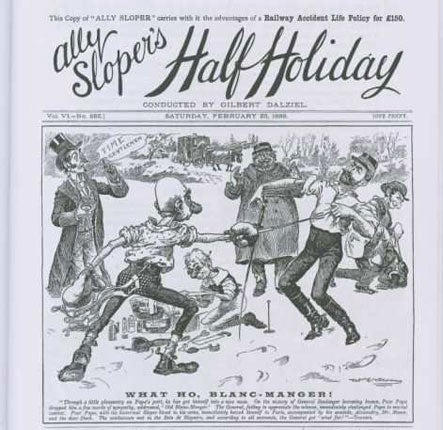Stop press - old news is good news: Antique newspapers
As a rare collection of antique newspapers goes on sale, Sophie Morris spies an investment with historic interest

Today's hefty newspapers could learn a thing or two from Mingaye Snider's Temperance Lancet and Penny Trumpet, which began life in 1841.
The slogan "Quality not Quantity" appears on the masthead of the one-penny publication, which preaches temperance to Britain's bawdy working classes from a single sheet of paper that, 160 years on, is browned and pocked with a few marks, but otherwise entirely legible.
Political rags such as this were the order of the day in industrial-revolutionary Britain. Though the Temperance Lancet folded after a year, a similar publication called The British Workman and Friends of the Sons of Toil lasted nearly 70 years – Florence Nightingale disseminated it to soldiers on the battlefield to rally morale with its uplifting portraits of stoical working-class heroes. It reached a circulation of 250,000, a remarkable feat in the days when mechanical printing presses were a rarity, and reading newspapers had not yet become the widespread, accessible pastime it is today.
These titles, and nearly 200 others, have now been carefully researched and catalogued by Ed Nassau Lake, and are all available to buy through Jarndyce Antiquarian Booksellers, opposite the British Museum in London. The shop is owned by his father Brian Lake, who has collected the rare editions over many years. This is the first time in 20 years such a collection has been available, and many bound volumes have already left the shop, headed for libraries and collectors.
If you're after a gift for a media-interested friend, you could do worse than investing in an issue of the first ever daily paper, The London Gazette, which starts at just £30. The Gazette started out as The Oxford Gazette in 1665, when the King sought refuge from the plague in Oxford. The following year the paper returned to the capital with the Royal Court, and resumed its position as the official voice of government, referring to the King as "His Sacred Majesty", and reporting on foreign policy (be warned: the detailed battle reports can drag on a little).
As well as examples of England's oldest daily paper, Nassau Lake has turned up pieces by W T Stead, considered to be the first investigative reporter, and the first journalist to achieve celebrity. He is also credited as the pioneer of the long-form interview as a type of reportage, and the inventor of "creating" news stories and packages through methodical and often brave research, instead of sticking to straight eye-witness reporting.
Stead began writing for The Pall Mall Gazette in the late 19th century, and in 1885 ran a series of articles entitled The Maiden Tribute of Modern Babylon, an exposé of child prostitution and the white slave trade. To prove the veracity of his findings, Stead bought a 13-year-old girl from her chimney-sweep father. His revelations brought about a change in the law, but Stead ended up with a three-month jail term for his illegal purchase.
If one sought the sort of fame Stead enjoyed, setting up a newspaper in one's own name was one way to achieve it, as exemplified by Mr Redhead Yorke's Weekly Political Review, Cobbett's Weekly Political Register and Berthold's Political Handkerchief. But airing political opinions, grudges and grievances was a risky business in the 17th, 18th and 19th centuries, when freedom of speech was still just an ideal. When William Cobbett objected to a flogging in his Weekly Political Register in 1810, he was sentenced to two years in Newgate Prison.
Few very early publications are still in print today, exceptions being The Tatler, first published in 1709, The Economist and The Spectator, the last two proving the enduring value of insightful and considered political writing. The collection also reveals a lighter aspect to the history of newspapers. Ally Sloper's Half Holiday introduces some of the first regular comic characters, and many others feature satirical cartoons. Tit-Bits From All the Most Interesting Books, Periodicals and Newspapers in the World shows that the current vogue for aggregator magazines, popularised by The Week, has at least 130 years of history behind it. You could find all you needed to know about embroidery and flower arranging in The Lady's Newspaper, and, in The Family Doctor and People's Medical Adviser, a penny bought you advice on common ailments from a doctor, and a discourse on the dangers of corsets. Inside, even back in the 1880s, there are adverts for slimming pills.
It has taken Nassau Lake just over a year to catalogue the collection, due to the scale of the job and a propensity for being side-tracked by the many curious pieces of printed ephemera. One such is the first known piracy of Dickens, discovered in The Albion, from New York, which printed six of Dickens' early works without permission in the early 1800s. This would have to be a present for someone special, however, priced as it is at £4,800.
Subscribe to Independent Premium to bookmark this article
Want to bookmark your favourite articles and stories to read or reference later? Start your Independent Premium subscription today.

Join our commenting forum
Join thought-provoking conversations, follow other Independent readers and see their replies